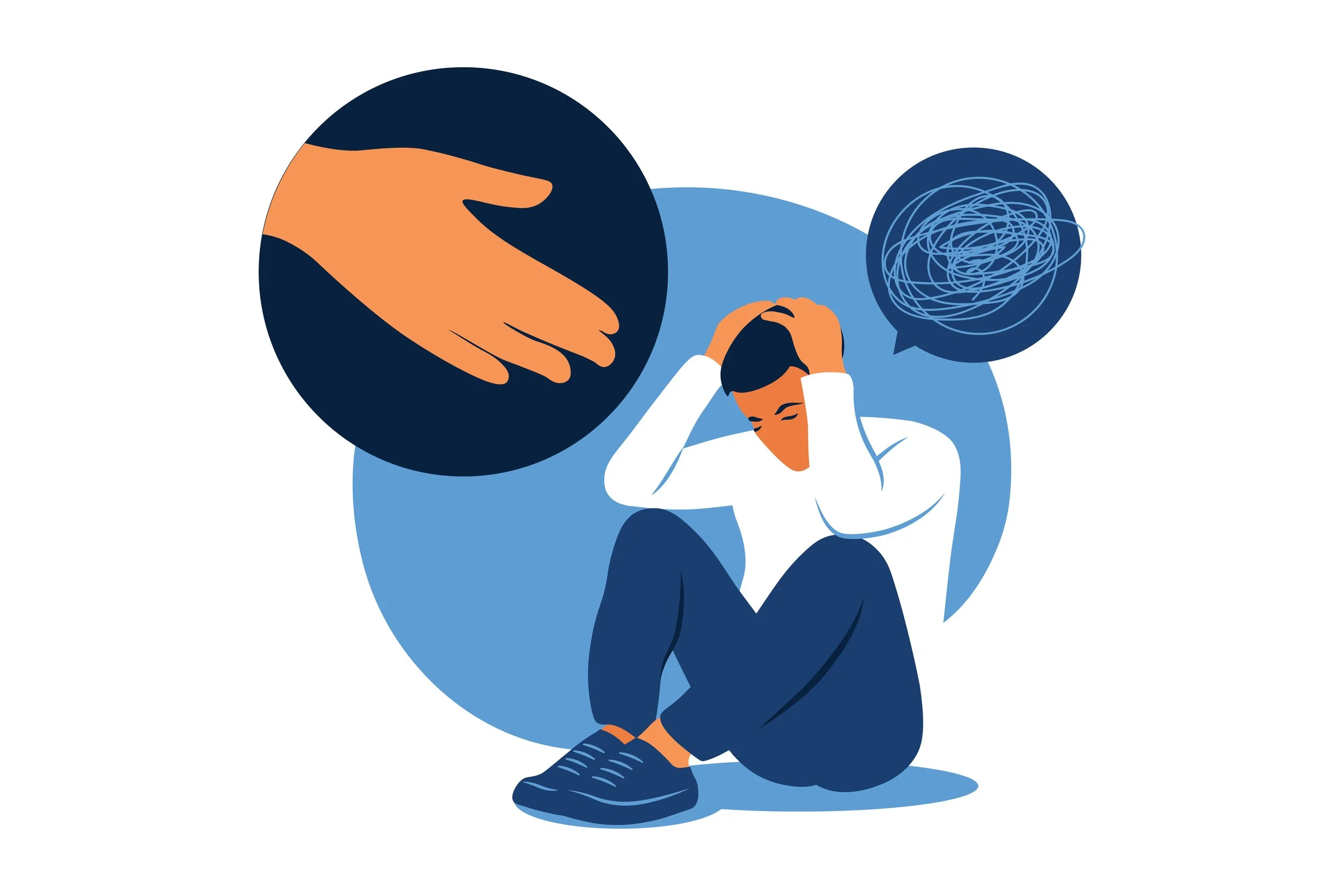Exploring PTSD Statistics, Facts & Recovery
Post-Traumatic Stress Disorder (PTSD) is a serious mental health condition that can occur after experiencing or witnessing traumatic events. While most people are familiar with the association between PTSD and military service, it is a widespread issue that affects people from all walks of life. PTSD can emerge after exposure to any type of stressor, including accidents, violent incidents, natural disasters, or even childhood abuse. Understanding the prevalence of PTSD, its symptoms, and the different demographic groups affected by it is crucial to raising awareness, promoting early intervention, and improving treatment outcomes. In this article, we will explore key PTSD statistics, interesting facts, and the treatment options available for those affected by the disorder.
PTSD Statistics: A Closer Look
General PTSD Prevalence
According to post-traumatic stress disorder statistics, approximately 5 per cent of Americans, or over 13 million people, are living with PTSD at any given time. This makes PTSD one of the most common mental health disorders in the United States. It's estimated that around 8.7 per cent of adults in the U.S. will experience PTSD at some point in their lifetime. Despite the disorder's high prevalence, many individuals who experience trauma do not go on to develop PTSD. However, the effects can be long-lasting and severe for those who do.
Interestingly, PTSD does not only affect adults. Around 5 per cent of adolescents also have PTSD, underscoring the impact of trauma across different age groups. Trauma can affect anyone, regardless of age, gender, or background.
Gender Differences in PTSD Prevalence
Research shows that women are nearly twice as likely as men to develop PTSD after experiencing trauma. Approximately 1 in 9 women will develop PTSD at some point in their lives. This is in stark contrast to men, for whom the likelihood of developing PTSD is lower. The reasons for this disparity are complex and may include both biological and social factors, such as the prevalence of sexual assault among women and differences in how men and women cope with traumatic events.
PTSD and Types of Trauma
While PTSD is most commonly associated with combat trauma, it can develop after any form of stressor, including sexual assault, physical abuse, accidents, natural disasters, or domestic violence. Statistics on PTSD and domestic violence reveal that people who have experienced domestic abuse are at a significantly higher risk of developing PTSD. About 23 per cent of women in the military have reported experiencing sexual assault, with 55 per cent of female veterans and 38 per cent of male veterans reporting sexual harassment during their service.
Furthermore, PTSD symptoms statistics suggest that trauma survivors are more likely to develop PTSD if they have a history of prior trauma, a family history of mental health issues, or limited social support. This combination of factors contributes to the complex nature of PTSD.
PTSD in Veterans and First Responders
Veterans, especially those who have served in combat, have long been recognised as a high-risk group for developing PTSD. PTSD statistics related to veterans show a wide range of prevalence, with estimates ranging from 1.09 per cent to 34.84 per cent of veterans experiencing PTSD. For veterans exposed to combat, this number tends to be on the higher end. Additionally, first responders, including police officers, firefighters, and emergency medical personnel, are at significant risk for developing PTSD due to their frequent exposure to traumatic events. Studies indicate that up to 16 per cent of emergency physicians meet the diagnostic criteria for PTSD.
PTSD in Children and Adolescents
While PTSD is often discussed in adults, children and teenagers are also at risk. About 5 per cent of adolescents are diagnosed with PTSD each year. Adolescents who experience trauma, whether through physical abuse, bullying, or accidents, are particularly vulnerable to the long-term effects of PTSD. Left untreated, PTSD can have severe implications for a young person’s development, academic performance, and social relationships.
Global PTSD Statistics
PTSD is not limited to the United States. Canada has the highest prevalence of PTSD among the 24 countries surveyed, with an estimated 9.2 per cent of Canadians expected to develop PTSD at some point in their lives. Following Canada are Australia and the United States, highlighting PTSD as a global issue that transcends national borders.
Impact of PTSD in 2023
Looking ahead to 2023, PTSD statistics suggest that around 7 per cent of the global population will be affected by PTSD, which means that with the projected population increase, over 550 million people worldwide will be living with this condition. The increasing prevalence is attributed to several factors, including rising social stressors, media exposure, and a growing recognition of the impact of mental health disorders.
PTSD Symptoms and Treatment
PTSD manifests in a variety of symptoms, which can significantly impair a person’s ability to function in daily life. Some of the most common PTSD symptoms include:
Intrusive memories, such as flashbacks or nightmares related to the traumatic event
Avoidance of people, places, or activities that are reminders of the trauma
Negative changes in mood and thoughts, such as feelings of guilt, shame, or hopelessness
Heightened arousal, including difficulty sleeping, irritability, or being easily startled
Fortunately, there are several effective treatments for PTSD. Cognitive Behavioral Therapy (CBT) and Eye Movement Desensitization and Reprocessing (EMDR) are two of the most widely used therapeutic approaches. Medications, including SSRIs (Selective Serotonin Reuptake Inhibitors), can also help reduce symptoms. Early intervention is key to improving outcomes for individuals with PTSD.
Conclusion
PTSD is a widespread and often debilitating disorder that affects millions of individuals worldwide. Whether as a result of combat, domestic violence, natural disasters, or other traumatic events, the impact of PTSD can be profound. Understanding PTSD statistics, the demographics most affected, and the available treatments is critical to improving outcomes for those living with the condition. Through awareness, early intervention, and effective treatment, it is possible to help individuals with PTSD lead fulfilling lives despite the challenges they face.
Q&A
Q1: What are the main causes of PTSD?
PTSD is typically caused by experiencing or witnessing a traumatic event. Some of the most common causes of PTSD include physical or sexual abuse, accidents, natural disasters, combat exposure, or the sudden loss of a loved one. Each individual responds to trauma differently, which is why not everyone who experiences a traumatic event will develop PTSD.
Q2: How common is PTSD in the United States?
PTSD is a prevalent mental health disorder in the United States. It is estimated that approximately 5 percent of Americans, or over 13 million people, are living with PTSD at any given time. In total, about 8.7 per cent of U.S. adults will experience PTSD in their lifetime, and 5 per cent of adolescents are affected annually.
Q3: What are the most common symptoms of PTSD?
The most common symptoms of PTSD include flashbacks, nightmares, hypervigilance, difficulty sleeping, and emotional numbness. These symptoms can lead to severe distress and interfere with daily functioning, making it difficult for individuals to work, maintain relationships, or engage in everyday activities.
Q4: Can PTSD affect children?
Yes, children and adolescents can develop PTSD, especially if they have experienced physical abuse, bullying, or other traumatic events. About 5 percent of adolescents are diagnosed with PTSD each year. Symptoms in children may include withdrawal, acting out, or regressive behaviors. Early intervention is important for helping children recover from trauma.
Q5: How is PTSD treated?
PTSD is treatable through a combination of psychotherapy and medication. Cognitive Behavioral Therapy (CBT) is a common treatment, along with Eye Movement Desensitization and Reprocessing (EMDR) therapy. Medications, such as SSRIs, may also help manage symptoms. The most effective treatments focus on assisting individuals to process their trauma and learn coping strategies to deal with distressing symptoms.


